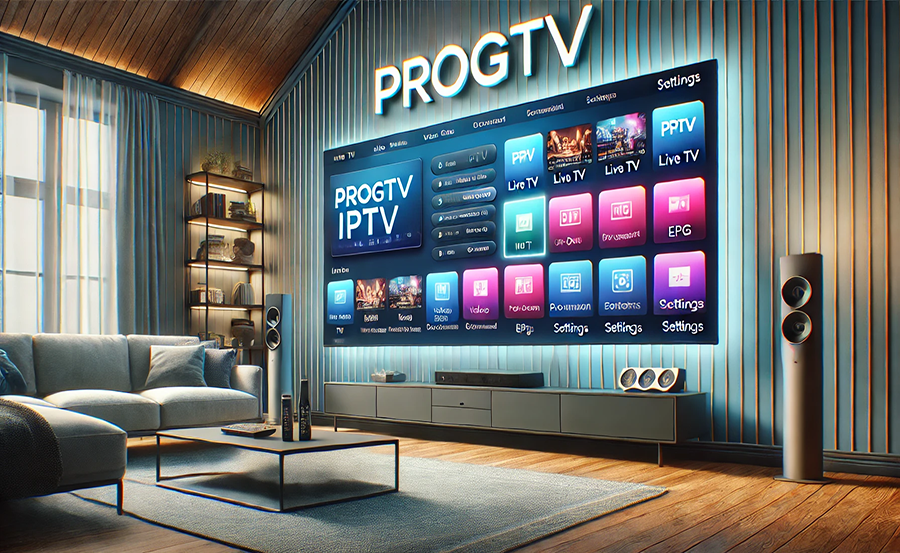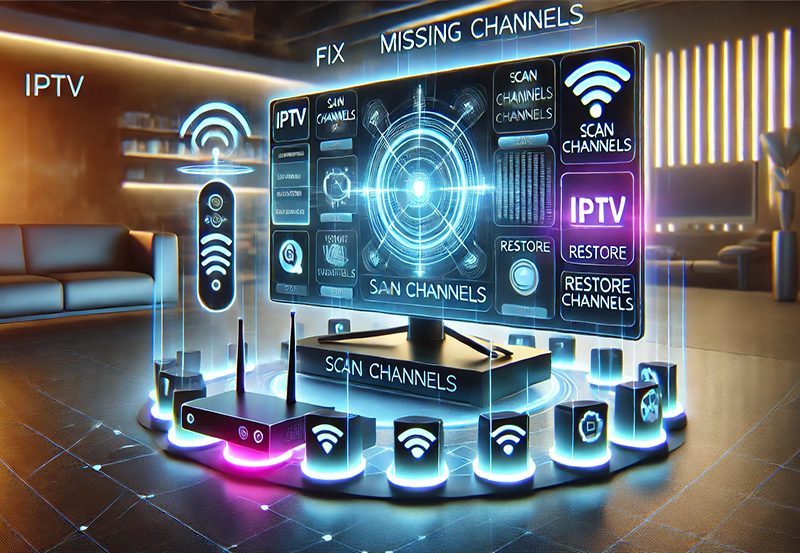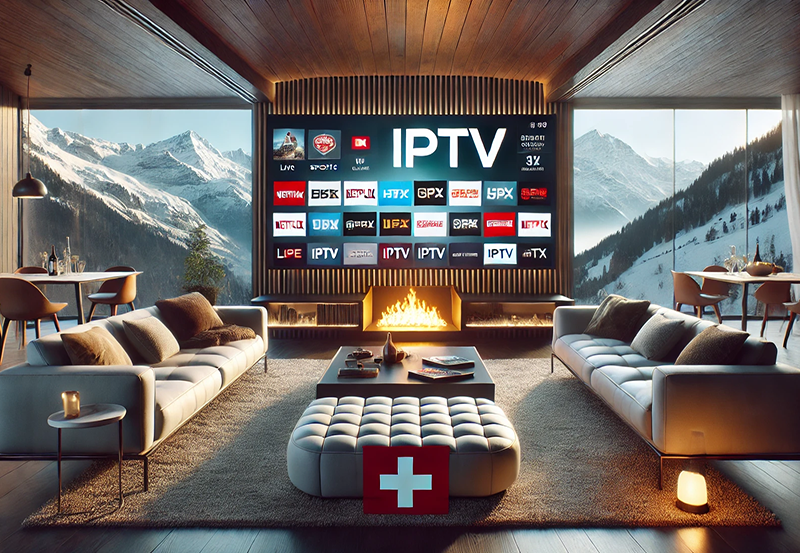In today’s rapidly evolving digital landscape, IPTV, or Internet Protocol Television, plays a significant role in how we consume entertainment. The underlying protocols—UDP and TCP—form the backbone of IPTV streaming, each offering distinct advantages and nuances in performance. This article explores these protocols comprehensively to assist you in comprehending their differences, ultimately aiding you in choosing the best streaming solution for your needs. Buy 1 Year IPTV Subscription and Enjoy Unlimited Content
What is IPTV?
IPTV, short for Internet Protocol Television, is a digital television delivered over the Internet. Unlike traditional cable or satellite TV, IPTV provides content via packet-switched streams. This flexibility allows users to access live broadcasts or on-demand content on various devices, such as smart TVs, tablets, or smartphones. The rise of IPTV has transformed how audiences engage with media, offering more choices and control over what they watch and when.
Decoding IPTV Protocols: UDP and TCP Overview
Understanding UDP: User Datagram Protocol
User Datagram Protocol (UDP) is a connectionless protocol known for its simplicity and speed. It allows data packets to be sent without establishing a prior connection, making it suitable for applications where speed is crucial, like live sports streaming or real-time video conferencing. However, its lack of error correction can lead to packet loss, affecting the quality of the streaming experience.
Key Features of UDP
- Low latency: Ensures quick data transmission, minimizing delays.
- No congestion control: Allows continuous data flow regardless of network conditions.
- Simplicity: Reduces overhead by bypassing error-checking processes.
Due to its features, UDP is favored when speed outweighs reliability concerns, thus making it a popular choice among IPTV providers prioritizing quick content delivery.
Exploring TCP: Transmission Control Protocol
Transmission Control Protocol (TCP) offers a more reliable data transmission method by ensuring error correction and data integrity. Unlike UDP, TCP establishes a connection and checks for errors before sending data packets, which can introduce slight delays. However, it guarantees the complete and accurate delivery of content, making it ideal for applications where buffering is acceptable for the sake of quality, such as watching high-definition movies or series.
Key Features of TCP
- Reliable connection: Ensures all packets are delivered correctly and in order.
- Error correction: Detects and corrects errors during data transfer.
- Flow control: Manages data pace to prevent network congestion.
While its reliability may come at the cost of increased latency, TCP remains essential for scenarios where data integrity is favored over speed, securing its status as a trusted protocol for quality-centric IPTV services.
Choosing Between UDP and TCP for IPTV Streaming
Assessing Streaming Needs
When deciding between UDP and TCP for IPTV streaming, it’s crucial to consider your specific needs and circumstances. If speed and real-time performance are paramount, especially in live sports streaming or news broadcasting, UDP’s capabilities in reducing latency make it a suitable choice. However, if uninterrupted, high-quality viewing is your priority—perhaps for watching cinematic content—TCP’s reliable error correction will serve you well.
Balancing Cost and Quality: Affordable IPTV Considerations
Cost often plays a critical role in choosing an IPTV protocol and service. Affordable IPTV solutions may prioritize UDP for its low overhead and scalability, providing a budget-friendly option without significantly compromising on quality. On the other hand, premium services might invest in TCP to ensure top-notch viewing experiences, justifying a higher price point.
Understanding the Role of Internet Connection
A stable, high-speed internet connection can greatly improve the IPTV experience, regardless of the protocol used. While UDP may suit environments with fluctuating bandwidth due to its simpler nature, a reliable connection can mitigate TCP’s latency concerns, highlighting the intertwined relationship between internet performance and protocol effectiveness.
Modern IPTV Services and Protocol Usage
The Shift Towards Adaptive Bitrate Streaming
Modern IPTV services increasingly adopt adaptive bitrate streaming (ABR) to enhance performance. This technology dynamically adjusts video quality based on available bandwidth and viewport size, often leaning on TCP due to its reliability. ABR ensures consistent viewing experiences, adapting seamlessly to network conditions.
Discover Superior IPTV Viewing Options
Users seeking the best IPTV channels and experiencing superior streaming should explore services that leverage both UDP and TCP, switching between protocols based on content type and user preference. Some providers offer customizable settings, allowing users to tailor the protocol according to their viewing habits and internet capabilities.
Towards an Optimal IPTV Experience
The Future of IPTV Protocols
As technology evolves, IPTV continues to embrace new protocols and standards to optimize performance and user satisfaction. Innovations like QUIC, developed by Google, combine the strengths of UDP with enhanced reliability features, promising to further refine the IPTV landscape and provide viewers with unparalleled streaming quality.
User Engagement and Feedback
Engaging with customer feedback allows IPTV providers to fine-tune their protocol usage, ensuring that users’ preferences and viewing experiences are prioritized. This collaborative approach aids in shaping future developments and fostering a more user-centric IPTV environment.
FAQs About IPTV Protocols
What is the main difference between UDP and TCP in IPTV streaming?
UDP focuses on speed and low latency, making it suitable for live streaming where timely content delivery is crucial. TCP prioritizes data integrity and reliability, ensuring that all packets arrive correctly, which is vital for buffer-friendly content like movies.
Can I use both UDP and TCP on my IPTV service?
Yes, many IPTV providers allow users to switch between UDP and TCP, offering flexibility based on the viewed content and network conditions.
How does my internet speed affect protocol choice?
High-speed internet enhances both protocols, with reliable connections reducing TCP’s latency issues, while uneven speeds might benefit from UDP’s low overhead and quick delivery capabilities.
Are there new protocols better than UDP and TCP for streaming?
Emerging protocols like QUIC, designed to improve upon both UDP and TCP, aim to deliver faster, more reliable streaming experiences and are gaining popularity in the IPTV domain.
What should I consider when choosing an IPTV provider?
Evaluate the provider’s protocol options, available IPTV channels, customer support, and how they handle streaming quality under various network conditions to ensure a service that fits your viewing needs.
Your Guide to Kodi vs Linux IPTV Players





